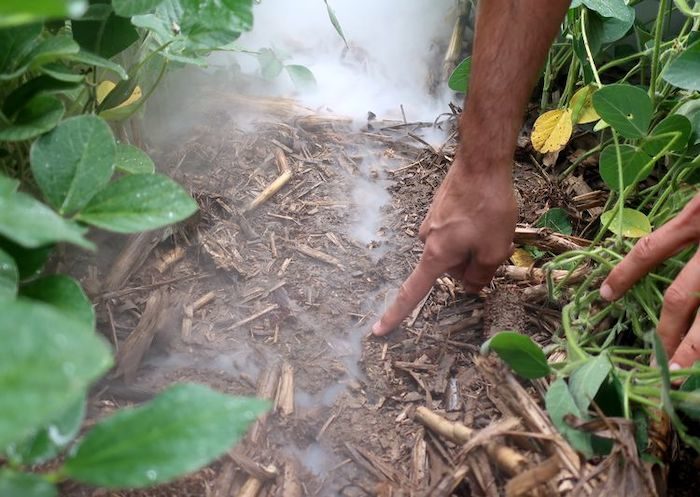When excess phosphorus (P) from the farm reaches downstream water bodies, it causes eutrophication and harmful algal blooms like the ones in Lake Erie and Saginaw Bay.
Much of this phosphorus is soluble and readily available for algae growth. This phosphorus originates from mineralization of soil organic matter and application of commercial fertilizer and manure.
No-till reduces soil erosion, reduces surface runoff, increases organic matter and increases soil water holding capacity. However, Baker et al., 2017 notes that there is a risk of P transport through macropores with no-till in fine-textured clay soil. No-till can promote the development of macropores in the generally fine-textured clay soil. The macropores allow phosphorus to quickly move from the soil surface to the drains without passing through the soil to reach the drains. The extent of macropore development depends on the soil. Some clay soils have greater potential for macropore development because of their swell and shrink characteristics.
In steep landscapes, soil erosion is a big problem. In this scenario, use no-till to reduce surface runoff. No-till is a good idea in coarse-textured soil because the soil generally does not lose P. No-till is a good idea in fine-textured soil only if you do not surface broadcast. When a fine-textured soil receives surface broadcast of fertilizer, there is a risk of losing P through macropores. Instead, Macrae et al. 2021 recommends coupling no-till in fine-textured soil with subsurface placement or band. Subsurface placement removes P from the path of surface runoff and moves P away from preferential flow paths. If subsurface placement is unfeasible, incorporate the fertilizer after surface broadcast.
Jarvie et al. 2017 reported that most of the dissolved reactive phosphorus (phosphorus that is readily available for algae) entering the Western Lake Erie basin was due to two general reasons:
- An increase in soil P, which means elevated soil test P. To combat the increasing soil test P, soil test and use variable-rate fertilizer application.
- Rapid water transport because more land is subsurface drained over time and drainage systems designed with narrower drain spacings. Subsurface drainage is vital for crop production. To combat the rapid water transport, use drainage conservation practices, such as controlled drainage and saturated buffers to reduce drainage discharge.
No single conservation practice will be the solution to reducing phosphorus loss from the subsurface-drained field. Staking of conservation practices in the field and at the edge of the field should be used to meet water quality and crop production goals. At Michigan State University Department of Biosystems and Agricultural Engineering, we are evaluating drainage conservation practices including controlled drainage and saturated buffers to reduce nutrient loss in drainage discharge.






